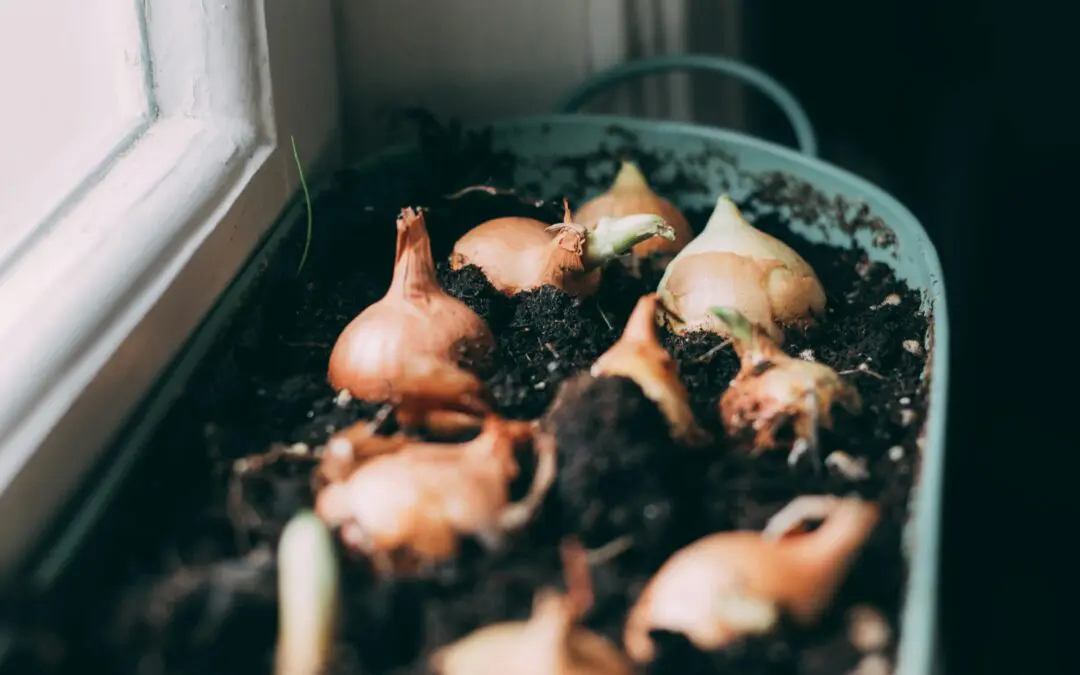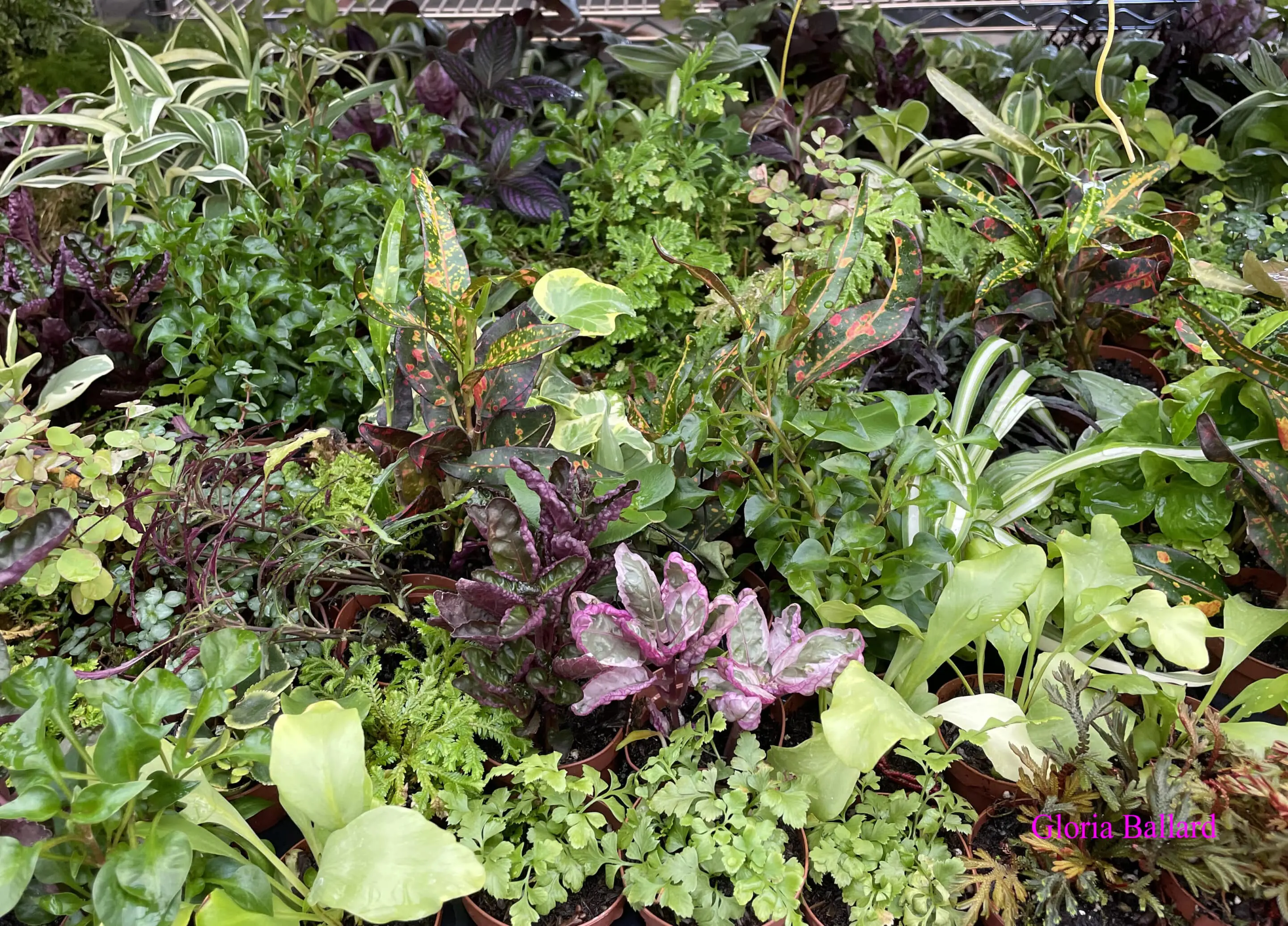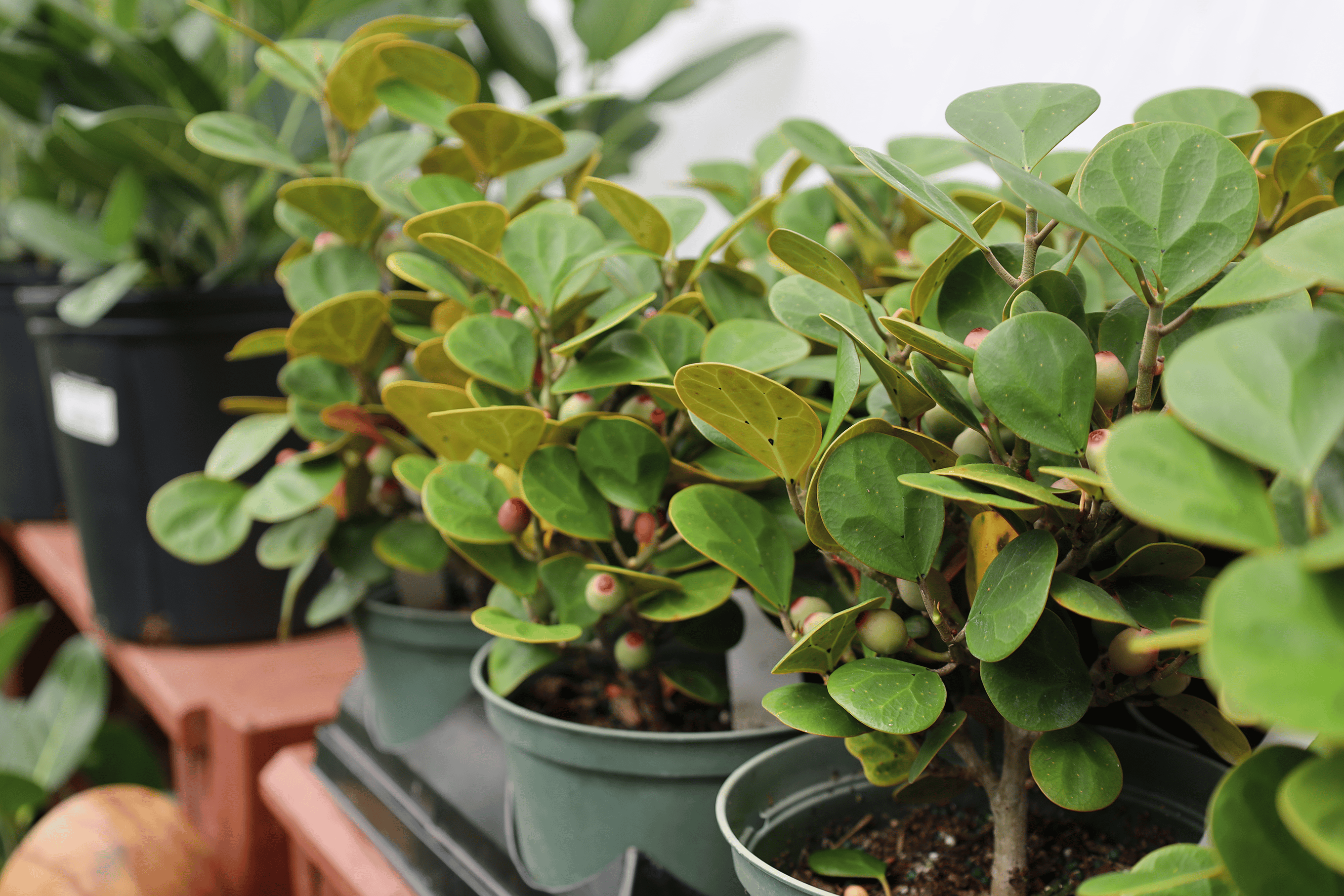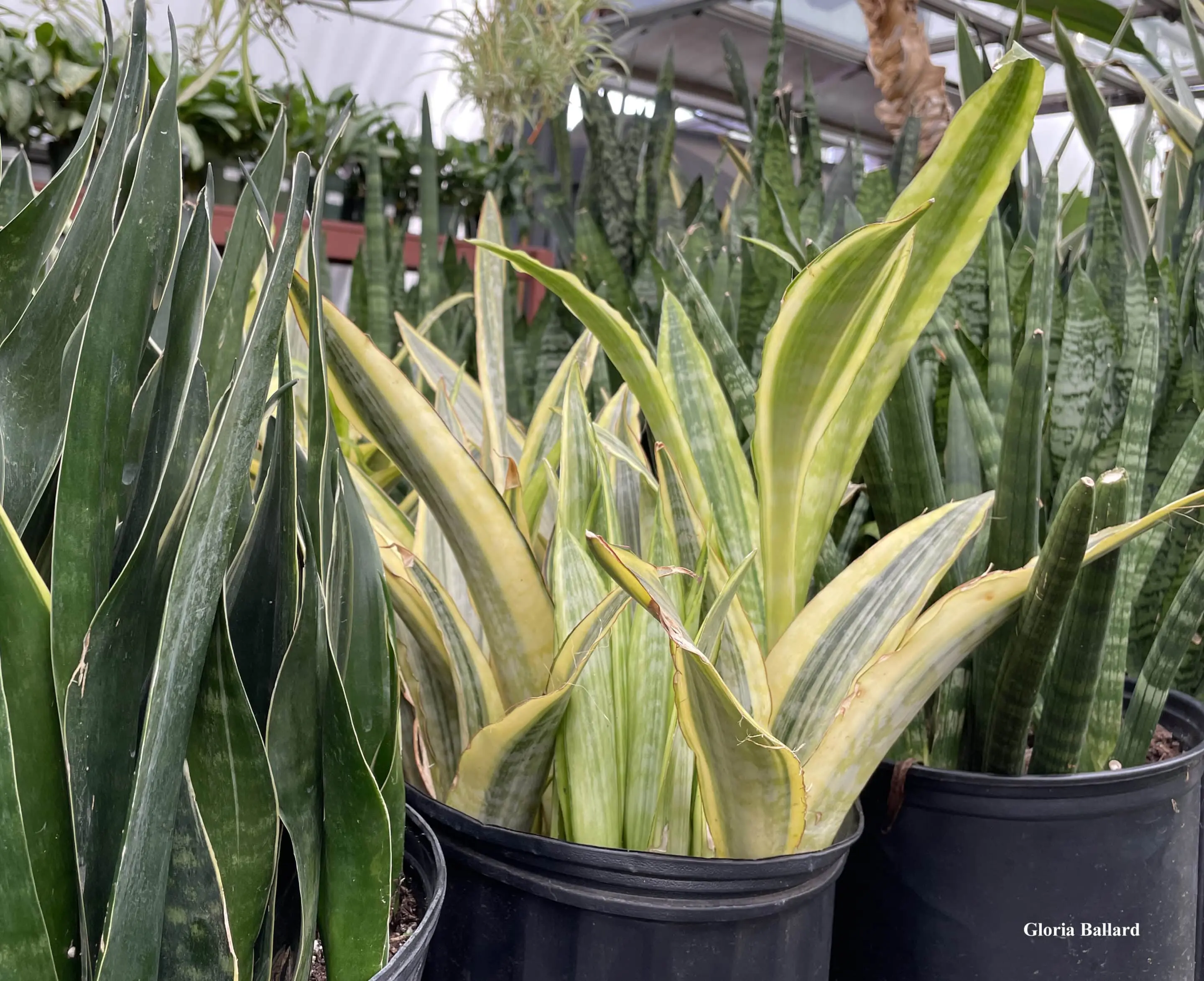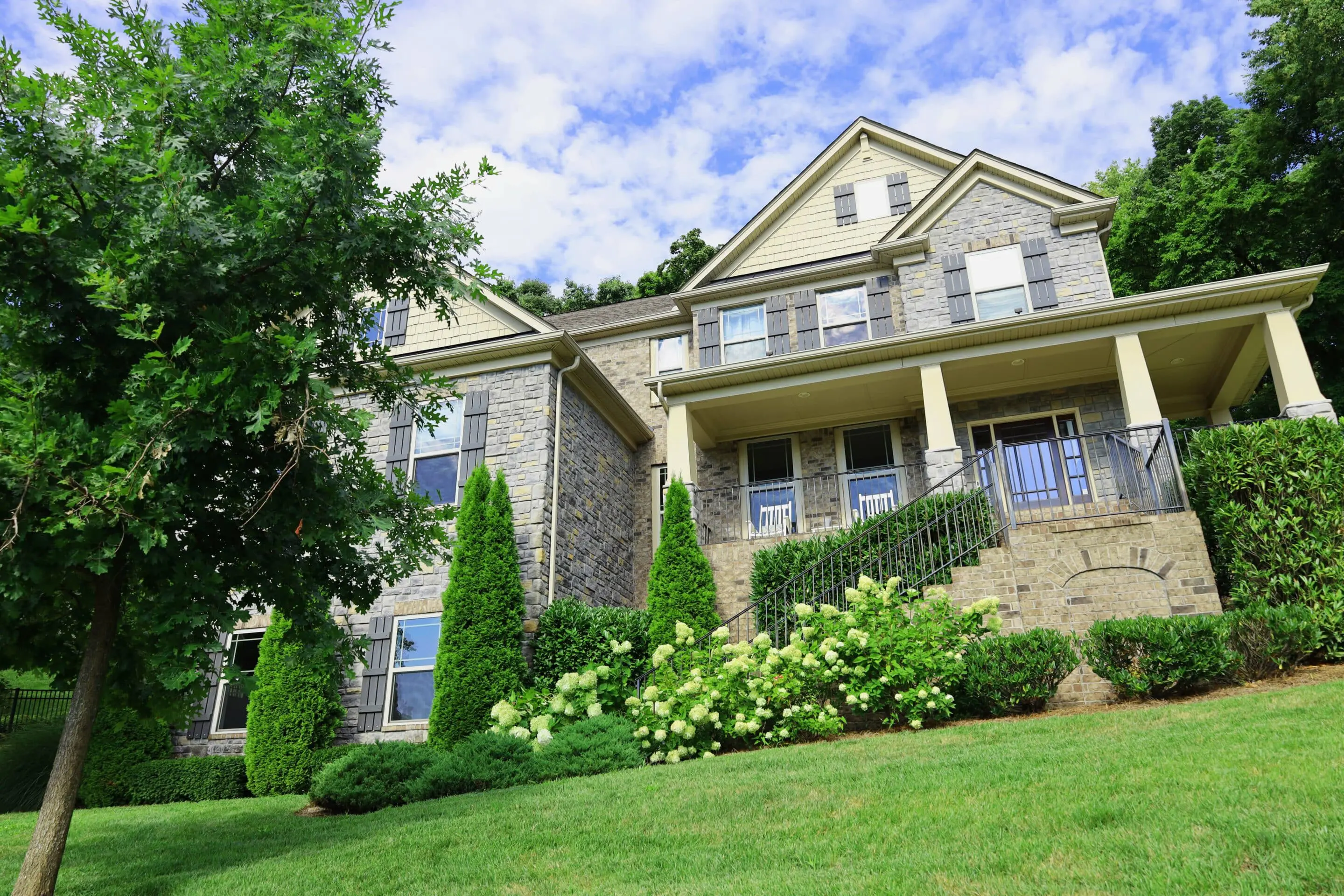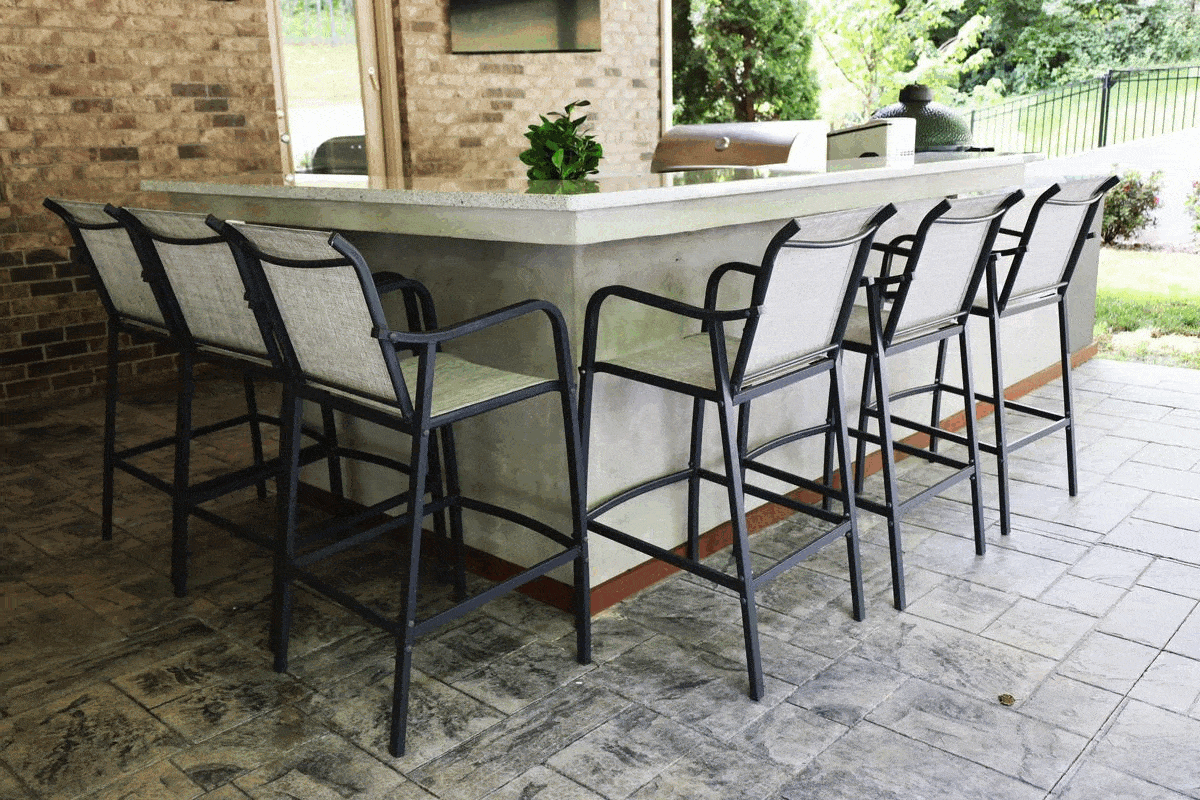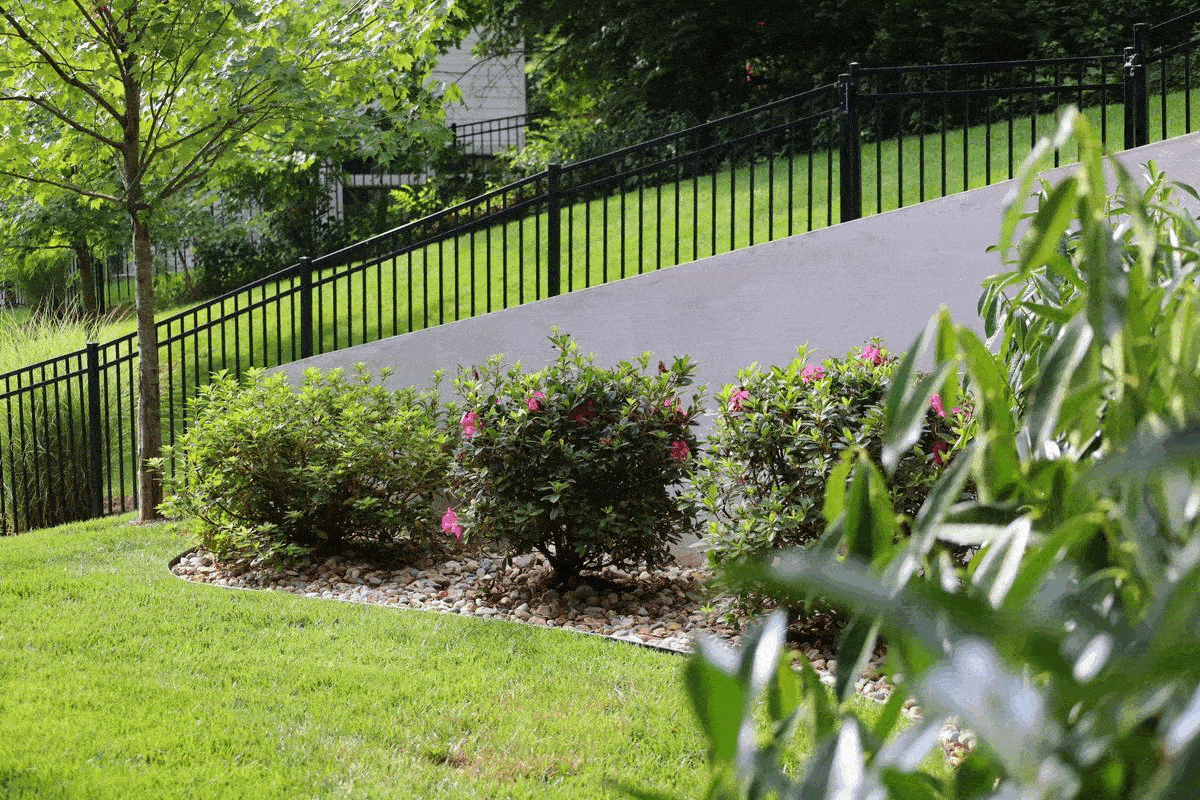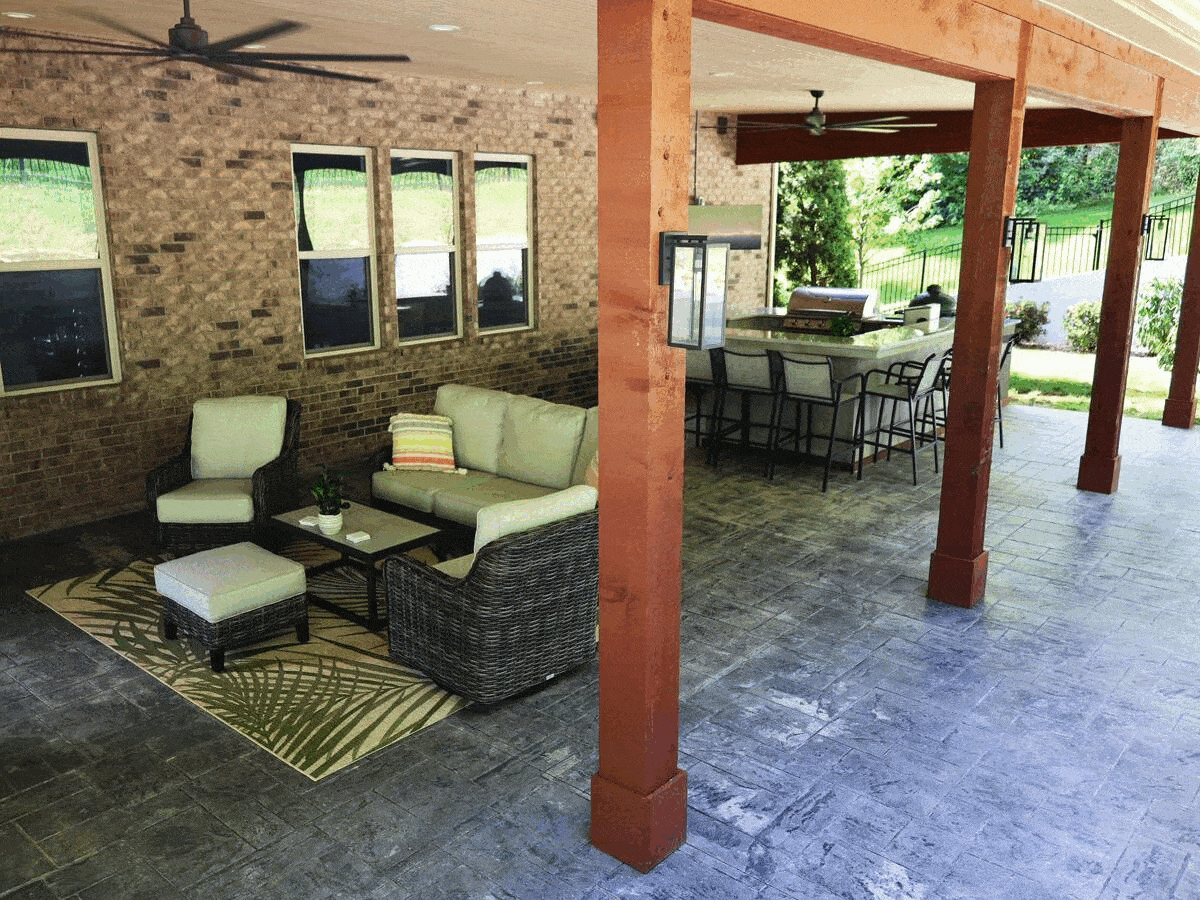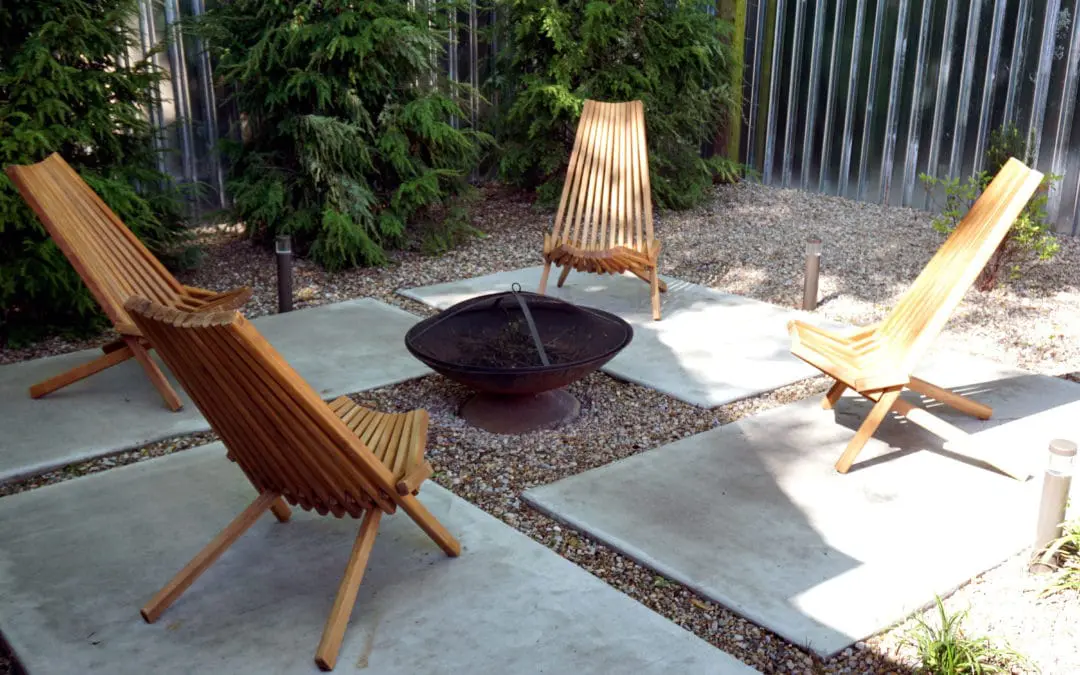
by Gloria Ballard | Sep 20, 2022
————————————————————–
It’s still more than a month before winter officially sets in, but your houseplants are already feeling the change. With fewer hours of daylight and cooler temperatures, even the plants inside your home are getting ready for that shift in the seasons. Here’s how to help them through the shorter, darker days of winter.
Water
During the growing seasons, most houseplants require more moisture to help feed those actively growing roots and foliage. But in winter, some of your favorites may need less. Factors that determine their water needs depend on the species, as well as the air temperature and the container they’re in. You’ll want to be careful not to over-water, which could cause roots to rot.
One good way to determine if it’s time to water is by checking the soil moisture with your finger. The potting mix may feel dry on the surface, but poke a finger an inch or so into the soil to test for moisture. If it still feels dry, it’s time to water.
Of course, if the leaves are drooping, the plant is most likely telling you it’s thirsty, but in some plants, that could be a sign of too much water. Before you automatically fill up the watering can, get to know the plants’ individual needs.
Humidity
One thing about heated indoor air in winter: it’s dry. And if your houseplants are not the type that prefer an arid environment, they won’t live up to their potential unless you provide the humidity – the amount of water vapor in the air – they crave.
There are several ways to raise the humidity level around plants: Mist them occasionally with a fine spray of water; place them on watertight, pebble-lined trays filled halfway with water; group them close together so that they form their humid own micro-climates. If you can put them in a bathroom or other space that is naturally more humid but still provide the light they require, your work is done.
Fertilizer
In general, many houseplants are going through a period of slower growth or dormancy, and don’t need as much fertilizer as they might when they are actively growing. An exception may be plants that are growing under lights. If you do find the need to provide nutrients, feed plants when the soil is already moist to avoid possible damage to the plant’s root system.
Plant pests
In spite of best efforts, sometimes unwanted guests appear on your houseplants. Aphids, mealybugs, scale insects and mites are among the most common pests. Left unchecked, they can cause damage and weaken the plant. And since there are no natural predators inside your house — no birds, ladybugs or other beneficial insects — they can multiply rapidly and move from one plant to another. If you spot any of these pests, take action to keep your plants healthy during the winter months.
It’s also important to keep the plants and the area around them clean. Remove wilted leaves and dead, dry foliage from the soil before they rot or grow mold, and sweep up fallen leaves and debris that could harbor bacteria or fungi.
Coming In From the Cold
What about those houseplants that spent the summer outdoors? Houseplants are generally tropical in origin, so they may quickly succumb to temperatures that fall into the 40s or below. Be sure those plants are back in a more comfortable environment before temperatures go that low.
But before you bring them into the house, examine the plants and their pots for problems:
- Clean out any leaves or other debris that may have accumulated in the pots during the summer. Examine the plant’s soil and, if possible, the roots, looking for earthworms, ants, pillbugs, snails and other creatures you don’t want to bring indoors.
- Wipe down or scrub the outsides of the pots to remove dirt, and wash drainage trays.
- Inspect the stems and leaves, looking for any of those insects that can damage the leaves and spread to other plants – those aphids, mealybugs, scale insects and mites are among the most common culprits. If you do find insects ready to hitch a ride inside, take appropriate measures to control them before you make the move.
Winter care for houseplant favorites
Do you have one (or more) of these popular plants? Here’s what they need to thrive in your home during winter, according to The Complete Houseplant Survival Manual by Barbara Pleasant:
Monstera: Moderate to bright light, no direct sun. Allow the soil to dry within an inch of the surface between waterings; needs less water in winter.
Fiddle-leaf fig: Bright to moderate light or fluorescent light. Keep the soil slightly moist at all times, but avoid over-watering.
Snake Plant (Sanseveria): Moderate light. Allow the soil to become nearly dry between waterings.
African violets: Bright indirect light or fluorescent light. Keep the soil slightly moist at all times, and water the soil, avoiding the leaves. Feed African violets year-round for best blooms.
Peace lily: Low to moderate light. Keep the soil slightly moist at all times, but avoid over-watering. Room-temperature water is best.
Visit the Gardens of Babylon Garden Center to see a wide selection of houseplants to add to your indoor garden.


by Gloria Ballard | Sep 10, 2022
Want to know how to plant bulbs, but don’t know where to start? If you dream of having garden beds full of spring flowers, the time to start planning for that is now. The crocus, daffodils, hyacinths, tulips, irises – all those beautiful, colorful springtime blooms – begin as bulbs planted in the fall, and once established in the garden, grow and multiply year after year after year, bringing an abundance of flowers every springs.
Most experienced gardeners likely have a variety of bulbs already growing in the landscape, but if this is your first garden, or your first time planting spring-flowering bulbs – here’s the how-to:

Bulbs, Rhizomes, Corms
Some gardeners use the general word “bulb” to describe different types of root systems the produce those favorite spring flowers.
True bulbs are generally round-ish with a flat base and a pointed top. They can range in size from fairly small to large, and have a papery outer layer. Daffodils, tulips, hyacinths and allium are true bulbs.
Bearded irises, lily of the valley, agapanthus and cannas grow from rhizomes, roots that are actually thick below-ground stems. The primary growth point is at one end of the rhizome, with more growing points along the sides. Roots grow into the soil from the underside of the rhizome.
A corm is an underground stem base that resembles a small bulb. Roots grow from the bottom, and the foliage and flowers grow from the growth point at the top. Crocus (one the earliest-blooming spring blooms), crocosmia and gladiolus are among the favorites that grow from corms.
Tubers and tuberous roots are thick or swollen underground stems. Elephant’s ear, caladium and anemone grow from tubers; daylily, dahlia, liatris and other garden favorites grow from tuberous roots.

Get Ready to Plant
The best time to plant spring-flowering bulbs is after the soil cools down – some experts recommend waiting until after the first frost, to ensure that the bulbs won’t be fooled into thinking it’s time to grow. But you can plan ahead of time, of course.
Think about where to plant. Most spring bulbs grow best in a sunny spot in soil that drains well. Keep in mind, too, that after the flowers bloom in the spring, it’s best to leave the foliage in place for several weeks. While the leaves are green, they are gathering energy for the bulb to bloom again the following year. Wait until the leaves begin to turn yellow or brown; it’s best not to plant bulbs in the middle of a lawn that will be mowed soon after the flowers are gone.
The “Dig / Drop / Done” method – dig a hole, drop in the bulb, fill in the hole and add water – can work in some cases, but you’ll have better results in the long run if you put a little time into bed prep.
If you are planning a new garden bed for bulbs, dig the soil to about 12 inches deep and work in plenty of organic matter. To plant individual bulbs in an established bed, dig a hole about three times the depth of the bulb, add a bit of loose soil and bulb food to the hole, place the bulb (pointed side up) and fill the hole to cover the bulb. Water and wait for spring.

Bulb-Planting Tips
- Different varieties of daffodils bloom at different times – some as early as February in Middle Tennessee — so to have daffodils blooming longer in your garden beds, plant both early and late varieties.
- Some bulbs are like candy to the rodents that live around (and under) your landscape. Squirrels, voles, chipmunks and gophers can make your bulb bed disappear before you can enjoy it. Most critters will avoid daffodil bulbs, but if you worry about your tulips or other tasty-to-rodents bulbs, consider planting the bulbs with a barrier of chicken wire, or sprinkle blood meal or chili pepper around the planting site to make it unpalatable to the unwelcome guests.
- When you plant, consider how to arrange the different flowering bulbs for the best “show” in the spring. Some gardeners enjoy blocks of color, others enjoy mixed colors. At any rate, spring-flowering bulbs look best in clumps or clusters, rather than as lonely individuals in the landscape.
- Some Middle Tennessee gardeners find tulips disappointing, as they often don’t bloom for more than two years. Planting new tulips each fall is the best way to get a reliable show of tulips in the spring.
Visit Gardens of Babylon’s Garden Center to find a wide selection of favorite spring-flowering bulbs to plant in your landscape this fall.

by Gloria Ballard | Aug 21, 2022
With summer ending and cool weather just ahead, we’re starting to think about houseplants again. I walked through the Gardens of Babylon Garden Center one recent morning and polled the staff to learn what they’re loving now. Their houseplant picks range from the tried-and-true to the most interesting and unexpected varieties:
“For any type of environment – dracaenas! They’re not the most special, but they’re the most useful. So easy to maintain, and they are great air purifiers.” – Bradley
There’s great variety in the Dracaena family, from the large, brightly colored ‘Hawaiian Ti’ to the sedate little all-green ‘Janet Craig’. Dracaenas of all types do well in moderate or bright, indirect light. Keep the soil lightly moist, but don’t overwater.

“These little terrarium plants are great, and there’s a huge variety. Start with one plant, or get ten. Making terrariums is really fun and anyone can get into it.” – Taro
Taro and I were perusing the shelf full of tiny plants that included miniature crotons, petite peperomia, tiny ferns, dracaenas, pothos and many others. A terrarium planting can be one plant or a whole garden of thoughtfully chosen and arranged little plants. The possibilities are endless. Start with a glass bowl or container of any size, add a layer of gravel or pebbles for drainage, a little activated charcoal to keep the air fresh, and lightweight potting mix, arrange the plants, then water lightly.

“My apartment doesn’t have much light, so it’s a little challenging, but I enjoy growing different pothos. My favorites may be ‘Pearls and Jade’ and another type, ‘Baltic Blue,’ which kind of looks like monstera.” – Devin
Pothos (Epipremnum aureum) ‘Pearls and Jade’ has lovely green and white variegated foliage; ‘Baltic Blue’ does, indeed, resemble monstera, with its fenestrated leaves. They enjoy moderate to bright light, but also do well under fluorescent light. Use potting mix that drains well, and allow the soil to dry out between waterings.

“I love a rubber plant. It provides so much reward for so little maintenance. And I think this variegated type is beautiful. Every leaf is like a little piece of artwork.” – McKenzie
The variegated Rubber plant that McKenzie pointed out (Ficus elastica) ‘Tineke’) has creamy white foliage brushed in light and darker green, resembling washes of watercolor. Rubber plants enjoy moderate to bright sunlight, but not direct sun. Keep the soil moist spring through summer; water less in winter.

“String of Pearls is one of the really great succulents. It’s such a gorgeous, unique plant.” – Cici
A pot of String of Pearls (Senecio rowelyanus) can look like a bowlful of little round, green beads on delicate threads. As the stems continue to grow, the “pearls’ tumble out over the edge of the bowl. This succulent, which may be most effective as a hanging plant, enjoys bright sun, and grows well in a cactus potting mix. Keep the soil slightly moist during spring and summer, and water less in the winter.

“With houseplants, when we say ‘figs,’ people think of the big plants with those huge leaves, fiddle -leaf figs. But Mistletoe fig is another good ficus to have as a houseplant.” – Trevor
Plant experts note that Mistletoe fig (Ficus deltoidei) is the only ficus that will grow fruit indoors – though the berries, which resemble mistletoe berries, are not edible. Keep mistletoe fig indoors in the winter in a bright window, and provide soil with good drainage and regular water. Fun fact: the plant’s tree-like form makes it a favorite of bonsai enthusiasts.

Two staffers – Neil and Mary – mentioned Sanseveria – snake plant – as easy-care favorites. Mary’s comment: “I’m not a great houseplant Mom, but I like succulents in general, and this one is a big, friendly plant that doesn’t need much care at all.”
There is a surprising range of shapes and sizes of sturdy Sanseveria plants, from skinny, tube-like leaves to tall, dramatic sword-shaped foliage. Grow them in moderate to bright light, but they also tolerate low light conditions. Keep the soil slightly moist, but don’t worry if you forget to water them; they tolerate a bit of neglect. Sanseveria is not completely indestructible – but almost.

Visit Gardens of Babylon’s Garden Center to select your favorite houseplants from the wide-ranging collection of commonly used and unusual varieties.

by Gloria Ballard | Aug 16, 2022
—
Sometimes in landscape design, big problems call for big solutions This was the case for a home in West Nashville that had a “really extreme backyard slope” of a hillside that leveled out almost at the back door. We talked with Gardens of Babylon landscape designer Eric VanGrinsven, who worked with the homeowner to solve the problem and provide much-needed open space in this home’s back yard.

What did the homeowners want?
The back of the home in West Nashville opened onto a small patio and the steep slope of the hillside, held back by a small and ineffective retaining wall. “What they wanted to do was to push the wall back to open up space for an outdoor living area,” the designer explains.
The original design of the patio also left it vulnerable to water that washed down the slope over the wall and collected at the back door when it rained. “It was not causing structural issues with the home,” VanGrinsven says, “but over time, it would have.”

What was your biggest challenge?
“The access to the back yard was really tricky, so getting materials and equipment back there” – a backhoe, lumber, cement and other large-volume necessities – “that was a logistical nightmare,” the designer says.
And because of the hillside-restructuring nature of the job, they brought in a structural engineer to design and direct the process of building the retaining wall.
“The wall is built extremely well, with a full drainage system behind it and a swale in the hillside, helping to move water around the side of the house.”
With the new, structurally sound, 6½ to 7-foot retaining wall cut into the hillside, the 250-square-foot patio has been opened up to a much more usable 1,100 square-foot outdoor room. It’s paved with concrete stamped to resemble pavers, and has a solid overhead structure covering three-quarters of that area, turning it into a large space for entertaining.

What do you think is the project’s best feature?
“The homeowner has a really amazing fireplace and outdoor kitchen underneath that structure,” VanGrinsven says. At six feet wide, three feet deep and a towering 15 feet tall, the gas fireplace is a commanding presence in this new outdoor room. The kitchen space at the spacious counter/bar includes a large grill and a refrigerator.
The builder also integrated a 6-foot mantel into the fireplace, with a smart TV installed above the mantel and another TV over the outdoor kitchen. Ceiling fans overhead keep the space more comfortable in the summer heat.
“It’s a really nice, large-scale entertainment area,” VanGrinsven says. “He could easily entertain 30 or more people on this patio.”
Outside the new outdoor room, the homeowner’s preference was to keep the space simple and clean, the designer says. Planting beds are limited to evergreen shrubs to soften the lines of the large new wall, with weed barrier over the soil covered with decorative stones to keep maintenance easy, “and to keep the owner’s large dog from tearing up the yard,” Van Grinsven says.

Click here to book a consultation with a Gardens of Babylon landscape designer who can discuss drainage and other landscape problems, suggest solutions, and help you enjoy your home’s outdoor spaces.

by Gloria Ballard | Aug 5, 2022
Fall is coming, and we can expect chilly nights soon. But wouldn’t it be great if you could still gather with family and friends out on the patio for a relaxing evening outdoors? Consider the warmth and congeniality a firepit on your patio or an outdoor fireplace can provide.
“Especially during this time of the pandemic, it’s a good way to get outside without going anywhere,” says Gardens of Babylon landscape architect Ryan Fogarty. While most of us no longer need open fires for cooking (except, possibly, for making s’mores), time with friends around a fire can warm the air and the heart.
As the weather cools, a crackling fire on the patio can extend the time you can be outdoors. “It’s a great way to enjoy being out in the yard,” Fogarty says. “It’s like a little retreat.”
Stylish additions
For outdoor entertaining, family gatherings, casual dinners on the patio, a firepit can be the element that brings people together. In an outdoor room, a fireplace can make the space comfortable even when the weather is cold.
“We have definitely seen an uptick this year with people requesting a firepit built into design plans,” Fogarty says. “It’s a cool experience in nature. Like going camping without going camping.”
Style choices run the gamut, from rustic stacked stones to designs that are sleek and modern, or anything in between.
Design and build
A typical firepit for Gardens of Babylon clients may be circular or square, usually 18 inches tall or a little taller. The width depends on the scale of the design, but it’s typically 36 or 42 inches wide or wider, Fogarty says. It may be built of wall block veneer and capstones, but can be any suitable material that may reflect the style of the landscape and the homeowner.
“If it’s in a patio, we build the patio around it,” Fogarty says. In a wood-burning firepit, the logs sit atop fire bricks flush with the ground. Gas firepits are also available. The gas company taps into the home’s gas line and attaches a fireplace insert, and the building crew builds a wall block or other veneer around the insert to hide it, Fogarty explains.
Questions to ask:
Here are some questions to consider when you include a firepit or fireplace in your landscape design:
- How and when you will use it? It is for entertaining large groups or small gatherings? Maybe it’s just for the two of you.
- Do you want wood-burning or gas-fired?
- How large should it be? Is a small firepit big enough? Is a massive fireplace too large?
- What is your style: rustic? Sleek and modern? Something in between?
- What type of seating will be placed around or nearby?
- If a firepit is to be installed in a patio, is there enough space to accommodate it?
- Should the firepit design include an additional wall for seating? “A firepit with a seat wall takes a lot of space,” Fogarty says. Maybe you’d rather have it out in your yard.”
A fireplace has an extra set of considerations. “The majority of fireplaces we have worked on have been a kit, and we veneer it with a brick or other natural veneer that the homeowner wants, Fogarty says. “A fireplace also requires a chimney flue and the insert, which comes with the kit.”
“For homeowners with kids it’s good for getting outside and sitting around,” she adds. And those marshmallows melting over the firepit for s’mores are something even the kids will enjoy.

To discuss ways to include a firepit or fireplace in your landscape design plans, book a consultation with a Gardens of Babylon landscape design team professional here.




